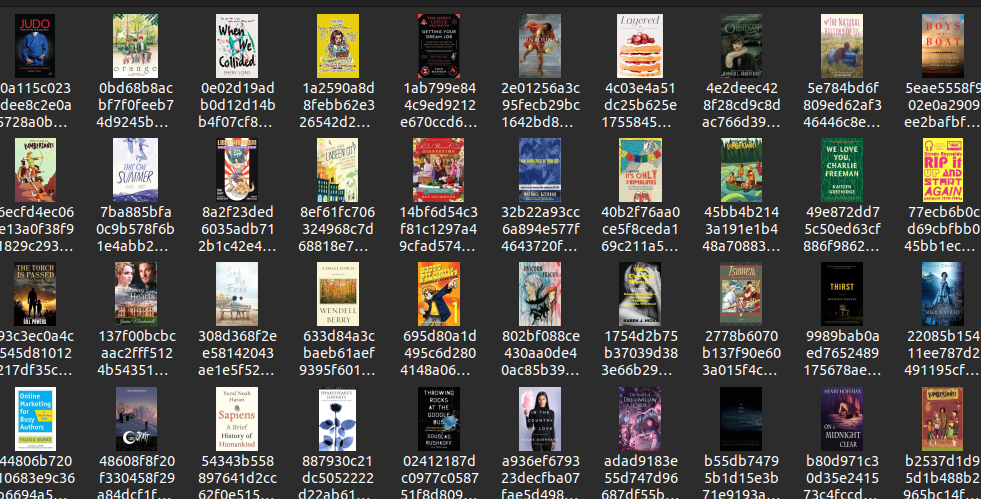Scrapy tutorial 3 Item-Pipeline - Using the pipelines to clean, validate and store the data.
Using Item-Pipeline to process the scraped data by cleaning, validating and storing. Showing how to download images while scraping the data using the media pipeline.
Introduction
In this tutorial I will show how to use the Scrapy item pipeline to parse, clean, validate, checking for duplicates and storing in a database and downloading images from the webpage. Scrapy documentation about item pipeline.
What is item pipeline?
When the spider scrapes an item it is sent to the Item Pipeline which will then process it. Item pipeline is a python class that must implement the process_item method. The pipeline can also implement optional open_spider and close_spider methods.
open_spidermethod is run when the spider starts.close_spidermethod is run when the spider is closing down.Enabling the pipelines
In
settings.pyuncomment the following line to enable the pipeline.
ITEM_PIPELINES = {
"books.pipelines.BooksPipeline": 300,
}
Cleaning the data
Using the ItemAdapter to get the item values and then validating or parsing the data.
pipelines.py
from itemadapter import ItemAdapter
class BooksPipeline:
def process_item(self, item, spider):
adapter = ItemAdapter(item)
# Removing the £ symbol from price
if adapter.get('price'):
adapter['price'] = adapter['price'].replace("£", "")
return item
Dropping duplicates
- While scraping items there can be duplicates that were already processed. To avoid processing same data multiple times there is an simple way to check if the data is already processes and drop the item with
DropItem.
Here is a simple example of checking for duplicate prices and dropping the item.
pipelines.py
from itemadapter import ItemAdapter
from scrapy.exceptions import DropItem
class BooksPipeline:
def __init__(self):
self.price_seen = set()
def process_item(self, item, spider):
# Check if the price in item is already seen and drop the item if true
adapter = ItemAdapter(item)
if adapter['price'] in self.price_seen:
raise DropItem(f"Duplicate price found. Dropping the item: {item}")
else:
self.price_seen.add(adapter['price'])
return item

Storing in database
- I am using sqlite database for this tutorial but you can use mysqli, mongodb or something else.
- This code creates a books.sqlite database file with a table for books data when initializing the
BooksPipelineclass. process_itemadds the item data into the table if possible.
pipelines.py
from itemadapter import ItemAdapter
import sqlite3
class BooksPipeline:
def __init__(self):
self.con = sqlite3.connect("books.sqlite")
self.cur = self.con.cursor()
self.create_table()
def create_table(self):
# Create table if it does not exists
self.cur.execute("""CREATE TABLE IF NOT EXISTS books(title TEXT,price REAL, upc TEXT, product_type TEXT, in_stock INTEGER) """)
def process_item(self, item, spider):
self.cur.execute(""" INSERT OR IGNORE INTO books VALUES (?,?,?,?,?) """, (item['title'], item['price'].replace("£",""), item['upc'], item['product_type'], item['in_stock']))
self.con.commit()
return item
Viewing the data from database
Easy way to view the data from sqlite file is to use sqlitebrowser.
$ sudo apt install sqlitebrowser
Images pipeline
- The Images Pipeline requires Pillow 7.1.0 or greater.
$ pip install pillow - Scrapy documentation media pipeline
- Default
Itemsfield name used to store the image urls isimage_urls.Enabling media pipeline
In
settings.py
ITEM_PIPELINES = {"scrapy.pipelines.images.ImagesPipeline": 1}
and configurating the storage location by adding
IMAGES_STORE = "/path/to/valid/dir"
If the path is not valid the pipeline will remain disabled.
If everything is correct the images will be saved into the directory given in IMAGES_STORE.
- Default setting to storing the file is using SHA1 hash of the URLs.

import scrapy
from books.items import BooksItem
class BooksSpiderSpider(scrapy.Spider):
name = "books_spider"
allowed_domains = ["books.toscrape.com"]
start_urls = ["http://books.toscrape.com/"]
def parse(self, response):
books = response.css("article.product_pod")
# loop all books and goto the book page to scrape the data
for book in books:
full_url = response.urljoin(book.css("h3 a").attrib['href'])
yield scrapy.Request(full_url, callback=self.parse_book)
# after all books on page are searched. Get the next page link
next_page_url = response.css("li.next a").attrib['href']
if next_page_url is not None:
yield response.follow(next_page_url, callback=self.parse)
def parse_book(self, response):
item = BooksItem()
product_main = response.css("div.col-sm-6.product_main")
product_info = response.css("table.table.table-striped") # Contains the html table with product information
item['title'] = product_main.css("h1::text").get()
item['price'] = product_main.css("p.price_color::text").get()
item['upc'] = product_info.css("td::text").get()
item['product_type'] = product_info.css("td::text")[1].get()
parse_numbers = "".join(x for x in product_info.css("td::text")[5].get() if x.isdigit())
item['in_stock'] = int(parse_numbers)
image_link_relative = response.css("img").attrib['src']
# convert the relative image link into absolute
item['image_urls'] = [response.urljoin(image_link_relative)]
yield item
Summary
In this tutorial I showed what the Item-Pipeline does and how to use it to parse, validate, remove duplicates and store data. And also showed how to use media-pipeline to download images from the website.